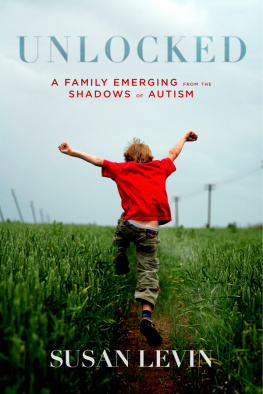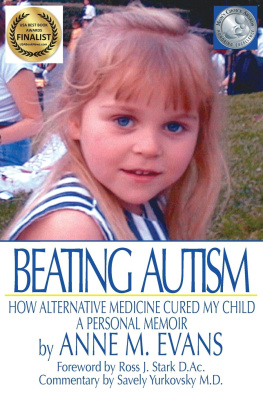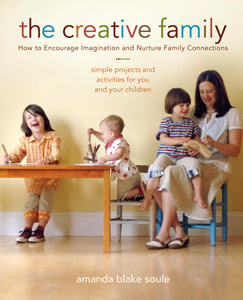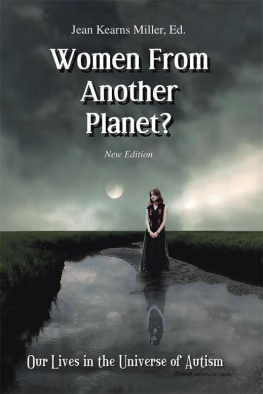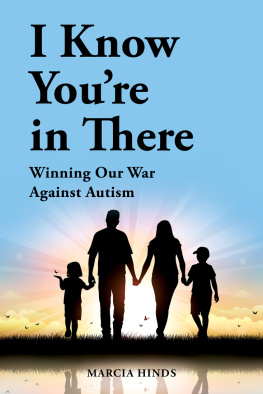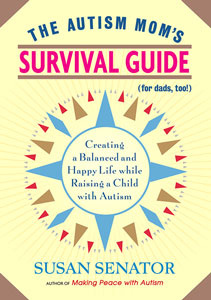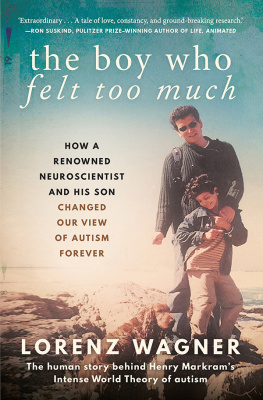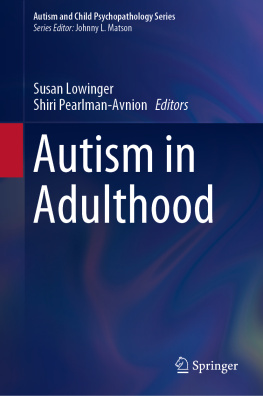Copyright 2015 by Susan Levin
All rights reserved. No part of this book may be reproduced in any manner without the express written consent of the publisher, except in the case of brief excerpts in critical reviews or articles. All inquiries should be addressed to Skyhorse Publishing, 307 West 36th Street, 11th Floor, New York, NY 10018.
Skyhorse Publishing books may be purchased in bulk at special discounts for sales promotion, corporate gifts, fund-raising, or educational purposes. Special editions can also be created to specifications. For details, contact the Special Sales Department, Skyhorse Publishing, 307 West 36th Street, 11th Floor, New York, NY 10018 or .
Skyhorse and Skyhorse Publishing are registered trademarks of Skyhorse Publishing, Inc., a Delaware corporation.
The Son-Rise Program and the Option Process are registered trademarks of Barry Neil Kaufman and Susan Marie Kaufman. Autism Treatment Center of America is a registered trademark of The Option Institute and Fellowship.
Visit our website at www.skyhorsepublishing.com.
10 9 8 7 6 5 4 3 2 1
Library of Congress Cataloging-in-Publication Data is available on file.
Cover design by Owen Corrigan
Print ISBN: 978-1-63220-719-7
Ebook ISBN: 978-1-63220-804-0
Printed in the United States of America
This book is dedicated to all parents, but especially my own.
And, of course, to Sean.
Contents
Introduction
A Practical Hope
I hung up the phone from a conversation with a friend and walked into the living room. I saw my infant daughter, Alina, asleep in her bassinet, and smiled. But wait a minutewhere was Ben, my three-year-old? Hadnt he been with Alina in the living room just moments before? How long had I been on the phone?
Ben? I called out hopefully. No answer. I walked through the first floor, searching. My heart began to pound. BenBen? BenBen? Ben, honey, where are you, sweetheart? I could hear the anxiety in my voice. I knew my hollering was useless; Ben never answered me, even when he was right in front of me. But where could he be?
I ran upstairs, looked in his room, then in ours, and then in the bathrooms. He was nowhere to be found. I ran downstairs again, through the kitchen. I ran into the living room to check on Alina, who was still asleep, blissfully unaware of her mothers hysteria. I ran outside, into the front yard. BENJAMIN? WHERE ARE YOU? BENBEN? ANSWER MOMMY!
By now I was crying, tears streaming down my face. I was in a state of utter terror, my mind filled with horrible visions of children stolen away from right under their parents noses, terrible images of kidnappers and perpetrators and everything Id ever seen on television. I raced around to the back of the house. He wasnt there. I ran back inside, called the police, and then called my husband. I ran out into the front yard again. I screamed Bens name over and over again. No one came. I couldnt breathe. I felt as if my world were ending.
Then I saw him. He was in the next-door neighbors yard, no more than a few hundred feet away. He had sneaked through the fence and was playing on their slide. He had been there the whole time, deaf to my screams, insensible to my hysterical, sobbing pleas, oblivious to all but himself and his own experience. He went up and down the slide, ignoring me, never registering my voice, my terror, or my pain. All of that was irrelevant. He was on his slide.
My relief was intense, but so, too, was my rage. How could he have put me through that? Why didnt he respond to my cries? Didnt he care that his own mother was in pain? How could he ignore me that way? Then I began to berate myself. How could I have let him get outside? What if he had really been taken from me? What kind of mother was I?
It took me years to discover that I was asking the wrong questions. Bens behavior wasnt about me . He wasnt ignoring me . The problem was not in me . It took our family several more years of pain, turmoil, and confusion to finally understand: Ben had autism.
***
On March 27, 2014, the Centers for Disease Control (CDC) announced new statistics on autism. According to their research, autism now affects one in sixty-eight children, and one in forty-two boys. That means virtually every grade in every elementary school has at least one child with autism.
In the 1970s, only 1 in 10,000 children had an autism diagnosis. In the 1980s, many argue in relation to the addition of new, compulsory vaccines, this figure rose to 1 in every 2,500. Autism is an epidemic of apocalyptic proportions, which attacks the very heart of our society: families and our childrens capacity to establish and sustain relationships with others.
In addition to the epidemic of autism, another epidemic abounds todayone of hopelessness and resignation on the part of medical professionals, parents, and other caregivers. The collective national belief is that autism cannot be cured. The American Academy of Pediatrics states on its website, on a page titled, Autism Facts, that although there is no cure, autism is treatable. An October 23, 2006, online article titled, Autism: An Incurable Developmental Disability, states, Developmental disability is an expression employed to refer to serious life long impairment that substantially reduces one or more of ones life functions.... One of such disabilities is Autism.
In an article published in The New York Times Magazine on July 31, 2014, journalist Ruth Padawer wrote the following:
Autism is considered a lifelong developmental disorder, but its diagnosis is based on a constellation of behavioral symptomssocial difficulties, fixated interests, obsessive or repetitive actions and unusually intense or dulled reactions to sensory stimulationbecause no reliable bio-markers exist. Though the symptoms of autism frequently become less severe by adulthood, the consensus has always been that its core symptoms remain. Most doctors have long dismissed as wishful thinking the idea that someone can recover from autism. Supposed cures have been promoted on the Internetvitamin shots, nutritional supplements, detoxifiers, special diets, pressurized rooms filled with pure oxygen and even chelation, the potentially dangerous removal of heavy metals from the body. But no evidence indicates that any of them can alleviate any of the core symptoms of autism, let alone eradicate it.
To date, our society has taught us to believe that autism is a lifelong and irreversible condition, with no hope for cure. This book is a challenge to that belief and an invitation to parents of children on the autism spectrum to believe that their children can heal .
Autism first entered our life as a curse, when our toddler, Ben, displayed undiagnosed, aberrant behavior, and then, later, when Ben received an autism diagnosis, we felt ourselves to be victims of what we believed to be a chronic developmental disorder. But as we desperately sought out, discovered, and implemented a number of different interventions, we learned that what we had been toldthat autism was irreversiblewas simply not true. With that new understanding and our newborn commitment to curing Ben of autism, we set out on a path that strengthened us, transformed us, and taught us how to truly and unconditionally love our childrenand ourselves.
Could we believe in our childs potential? It was a hard question. Hope was a frightening prospect. So many warned against the dangers of false hope.
I am a strong person. I am a Harvard College graduate, I was a lawyer in Boston, and, if you met me, you would probably say that I present as a stable and intelligent person. But this road, the one I chose and that I describe in this book, is tough. Even for strong people.

